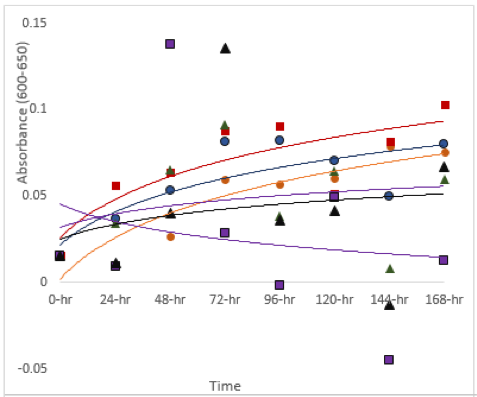VOLUME 11 (Supplement)

Philipp. Sci. Lett. 2018 11 (Supplement) 013-017
available online: July 13, 2018
*Corresponding author
Email Address: rjcalugay@up.edu.ph
Date Received: January 31, 2018
Date Revised: May 31, 2018
Date Accepted: June 19, 2018
ARTICLE
Robust cadmium removal and tolerance by a magnetotactic bacterium isolated from the sediment of an open-pit mine tailings lake
by Ronie J. Calugay1*, Aurora Ines J. Aguilar1, Jerico R. Liwag1, Paula S. Ramos1, and Ofelia D. Giron2
1Department of Biology, College of Science, University of the Philippines Baguio,
Governor Pack Road, Baguio City 2600, Philippines
2Department of Physical Sciences, College of Science,
University of the Philippines Baguio, Governor Pack Road,
Baguio City 2600, Philippines
Governor Pack Road, Baguio City 2600, Philippines
2Department of Physical Sciences, College of Science,
University of the Philippines Baguio, Governor Pack Road,
Baguio City 2600, Philippines
The consequences of rampant and improper disposal of mine tailings in the Philippines are the rise of heavy-metal contaminated bodies of water, the concomitant destruction of the environment, and the emergence of health hazards to people in surrounding communities. In response, this study aimed to isolate and screen magnetotactic bacterium from the sediment of a man-made open-pit mine tailings lake in Luneta, Antamok, Itogon, Benguet, Philippines for cadmium (Cd) removal. The bacterial strain isolated and purified by magnetotaxis using capillary racetrack method and grown in the selective medium Magnetospirillum Growth Medium (MSGM), designated here as strain UPB-MAG05, was inoculated at an initial concentration of 1.67 x 107 CFU/ml in MSGM added with different initial Cd concentrations at 0.0, 0.43, 0.67, 0.98, 1.35, and 1.84 ppm. Cd removal was measured through the change in Cd concentration in the cell-free culture supernatants using Atomic Absorption Spectroscopy (AAS) at time intervals 24, 72, 120, and 168 hours post-inoculation. Cells in the presence of Cd grew more favorably than the negative control measured at OD600-650nm. Cells grown at 0.67 ppm Cd showed the highest cell growth. Furthermore, cell growth was still observed at 1.84 ppm exhibiting the highest Cd uptake with 48.81% decrease in Cd concentration in the cell-free supernatant after 24 hours. This suggests that this is the extreme Cd concentration tolerated by strain UPB-MAG05 which is 360-fold higher than the toxic level in humans. In general, this study reported that the Philippine magnetotactic bacterial strain UPB-MAG05 has a promising potential as a bioremediating agent for Cd-polluted waters.
© 2024 SciEnggJ
Philippine-American Academy of Science and Engineering